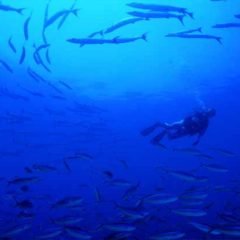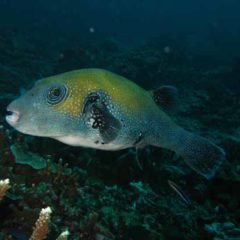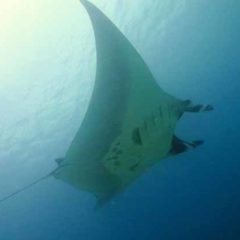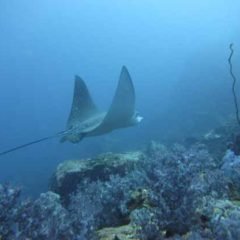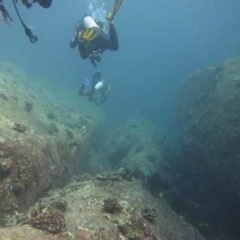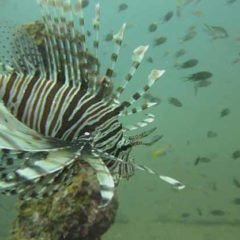Similan Islands Dive SitesSimilan Islands Dive Sites Quick Links
The Similan Islands Dive Sites: Thailand's best dive sites
The Similan Islands Dive Sites are some of Thailand's best dive sites. The Similans dive sites are quite simply awesome: the fish and marine life are something which must be seen to be believed. The clarity of the water, makes you want to jump in splash around like a little child. And with the Temperature being 29-30 degrees Celsius on average, you will find the water's warm enough or everyone. You can literally can stay in the water all day diving the Similan Islands Dive Sites and never get bored.
And if you are diving the Similans on a Rebreather then you probably will be doing 3 hour dives on the awesome Similan dive sites!
Some info about the Similan Islands
The Similan Islands is an Archipelago of 9 Islands, found 70 km West of Phang Nga Province. This makes the Similans Dive Sites approximately 100km from Phuket. The name Similan actually comes from the Malaysian word for the number 9, which is “Sembilan / Sembelan.”
In 1982 The Similan Islands, and in turn the Similan Islands Dive Sites, were designated the 43rd National Park of Thailand. And covered an area totaling 128 sq. km, including The Similan Islands dive sites. Then in 1998 The National Park added Koh Tachai, thus making it 140 sq. km altogether. Notably only 15 sq. km of the National Park consists of actual land. Consequently, the Similan Islands are generally uninhabited. The exceptions being Similan Islands No. 4 & 8 which have fully staffed National Park Offices.
The individual Islands all have names, as do Similan Islands dive sites. Though generally we refer to them by their numbers: Islands No.1-9, which run from South to North.
How the Similan Islands Dive Sites differ on their Eastern and Western Sides
The Eastern side of the Similan Islands dive sites are generally white sandy ocean floor with many large fields of hard and soft corals. These go down to depths between 25-40m.
The Western side of the Similans dive sites are large stacked granite boulders creating some amazing topography. This consists of swim-troughs, tunnels, archways and generally stunning seascapes. Additionally, there are also large fields of hard corals. However, the sand is more “rough / rubbly,” rather than fine sand. Also the currents can be more unpredictable on the Western side making the diving a little more challenging. This is especially around Full and New Moon.
What months can you dive The Similan Islands?
The National Park, and in turn The Similan Islands dive sites, is officially open from November 01st - May 30th. This exact date however can vary by a few days. The monsoon season is between June and October. During this time of year, the winds change direction which means the West Coast can be subject to wind. There can also be more rain than usual, hence the National Park, and the Similan Islands dive sites, close.
We usually say the “Phuket Liveaboard Season” for diving The Similan Islands begins October to the end of May. The good news for divers is that the Phuket Dive Sites do not close at any point during the year. This means you can dive Phuket all year round.
Can I dive The Similans on a day trip?
The best way to dive Similans is by a Liveaboard Trip. However the Similan Islands can be dived on a 1 day dive trip.
Similan and Surin Island Liveaboard Trips normally last around 4 days / 4 nights and offer around 10-20 dives. This will give you a good look at the variety of Similan Islands dive sites available. Luckily there are many operators to choose from with budgets to suit everyone.
PLEASE NOTE: Indepth Dive Centre is not affiliated to any particular Liveaboard Operator. Consequently we have impartial views on all trips. As such we believe we can offer you the best unbiased advice for your Liveaboard. Based in your budget, current certification level and level of experience.
After working for almost 20 years with these Liveaboard Trips, diving The Similan Islands dive sites, we have huge amount of experience about which boats are suitable for which people. And in addition, which Similans Islands will give you the best possible chances to see that Fish you have always wanted to see. Yes, you know what we are talking about!
Remember: although the Similan Islands dive sites are the same, not all Dive Boats are the same! Talk To us we know the business and we are here to guide you get the best possible Similans Liveaboard experience. We offer a more clinical first-rate service because we want you to enjoy your time and hopefully come back. It is that simple.
Any Questions, queries, comments or ideas about the Similan Islands or Thailand Liveaboard? PLEASE send them to us we will get back to you as fast as we can.
Can you take PADI Courses in The Similans?
Yes, of course it is possible to do courses on a Similan Islands Liveaboard diving the Similan Islands dive sites. As this is some of the best diving in Thailand it makes perfect sense to combine the two. And in addition, because the Liveaboard Life is nice and slow, a Liveaboard makes a perfect learning environment. As well as the perfect way to dive the best Similan Islands dive sites.
Remember most of the Similan Islands Dive Sites are deeper than 18m. Therefore, if you have not taken it already, The PADI Advanced Open Water Course is a must. This is because one of the dives that you do is The Deep Adventure Dive. Once you have completed this dive, you will be qualified to dive to a maximum depth of 30m. This is perfect for diving The Similans dive sites.
Incidentally if you want to deeper than 30m, then you would need to take your PADI Deep Diver Specialty course. This is a total of 4 dives and trains you down to 40m, the maximum depth of Recreational Scuba Diving. And again, the Similan Islands dive sites are some of the best places to be for your Deep Diver Course dives.
The 9 Islands which make up the Similan Islands Dive Sites are:
Similan Islands No. 1 – Koh Hu-Yong
Koh Hu-Yong is the 2nd largest Island and is roughly 8 km South of Similan Island No. 4. and as a beautiful white sandy beach on the Northwest side of the Island. Sadly this Island is currently closed to all visitors and divers. This is because it is a turtle breeding / protected area.
Similan Islands No. 2 & 3 – Koh Pa-Yang and Koh Pa Yan
Currently Ko Pa-Yang and Ko Pa Yan are also closed to visitors and divers. The Islands are made up of granite cliffs and boulders and as such there is no beach. At the time of writing Similan Islands No. 1-3 are closed in an effort to protect the underwater environment. However, Southwest of Island No. 3, there 2 two excellent Similan Islands dive sites: Shark Fin Reef and Boulder City.
Similan Islands No. 4 – Koh Miang
On the Eastern side of Islands No. 4 is Honeymoon Bay, which is not only a Similan Islands dive site, but it also has a great beach that people can visit.
There is also a path runs through the Island to another beach on the Western Side, which is called Princess Bay. On this path there is also a trail up to a view point. This is quite a hard walk, in other words it is steep and you will need shoes, but it is perhaps only 15 minutes? But you will be rewarded with some excellent views of the Eastern side of the Similans. This Island is also famous for Nicobar Pigeons and Hairy Legged Mountain Crabs. Furthermore, there is limited accommodation available in the form of basic bungalows and tents.
Similan Islands No. 5 & 6 – Koh Ha and Koh Hok
Koh Ha and Koh Hok are to the East of Similan Islands No. 4. There are no beaches just granite rocks, however the Similan Islands dive sites here are excellent. To the East of the Islands there is Anita’s Reef and on the Southwest corner there is the “Tuna Wreck. Both Islands are small and are uninhabited.
Similan Islands No. 7 – Koh Pa-Yu
Ko Pa-Yu has a combination of granite boulders, cliffs and Sandy beaches. Unfortunately the Eastern side, with the East of Eden, is another of the Similan Islands dive sites currently closed to divers and snorkellers. However The Western Side, with West of Eden, and the Northern Tip, Deep 6, offer some excellent Similan Islands dive sites diving opportunities and beautiful topography. This island is also uninhabited.
Similan Islands No. 7 & 8 - Hin Pusa / Elephant Head Rock
Hin Pusa / Elephant Head Rock is located between Islands 7 and 8, approximately 1 km South of Island No. 8. These boulders are also known as Elephant Head Rock, as the most Easterly rock is said to resemble an Elephants head. This is arguably the best of The Similan Islands dive sites in the Similan and Surin Islands. Next to Richelieu Rock.
Similan Islands No. 8 – Koh Similan
Ko Similan is the largest Islands in the Similans and is where main National Park Office is located. This is also where the National Park fees are paid. On the Northwest corner of the Island is a large bay and sandy beach known as Ao Geurk or Donald Duck Bay. Yes, the rock shaped like Donald Ducks Head', hence the dive site name. You can dive or snorkel here and there is a very good chance to see a Turtle from the dive boat. In addition to the Donald Duck Rock there is also the famous “Sail Rock” here. And you can also climb up here with great views out over the bay and to the West of the Similan Islands. There is very basic tent accommodation a restaurant.
Thankfully there are no actual resorts anywhere within the Similan Islands.
Similan Islands No. 9 – Koh Ba Ngu
Ko Ba Ngu is the most Northerly Island of the Archipelago and the Similan Islands dive sites around here is excellent, although it varies widely. The Eastern side consists of sloping sandy reefs, while the Western Side is huge granite boulders. By the way in the South there is a bay which is excellent for snorkeling.
Mantas can often be found around Christmas Point.
What are the Similan Islands National Park Fees?
Being a National Park there are fees to pay when you enter the Similan Islands National Marine Park and dive the Similan Islands dive sites.
NOTE: The National Park Fees are NOT normally included in the price of your dive trip. And as such the Fees would be collected on the boat. Please refer to our Liveaboards Quick View Page. As here you will find all the Liveaboards that we work with. At the bottom of each Liveaboard Boat page there is a Tab called "What's Included." Each individual Boat's National Park Fees collection policy is clearly written there.
At the time of writing National Park Entrance Fees are as follows:
Similan Islands – Koh Bon – Koh Tachai 400 THB
Richelieu Rock – Surin Islands 600 THB
Additional daily diving fee per day in these areas 200 THB
(Similan Islands/Richelieu Rock/Surin Islands)
Therefore on a 4 day / 4 night trip, (3 days Similans / 1 day Surin & Richelieu Rock), you would expect to pay 1,800 THB total for the trip.










